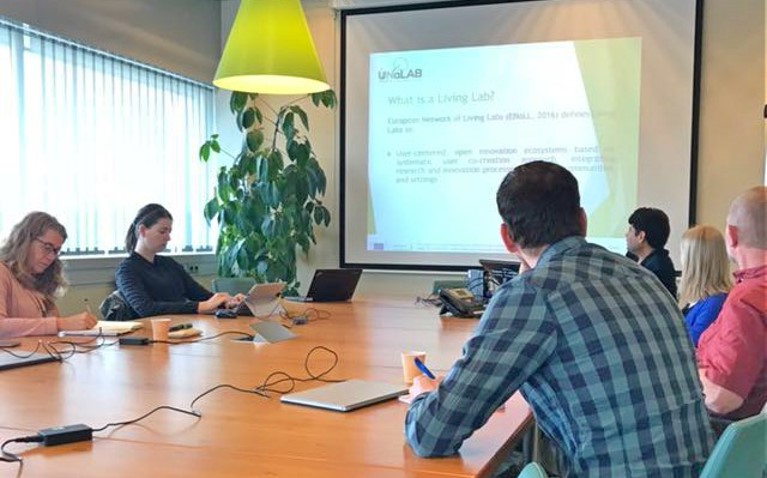
New Year, New Urban Living Lab Trainings in Cities
- Wed, 02/01/2019
In 2018, the first Urban Living Lab training sessions kicked off in UNaLab front-runner cities Eindhoven, Genova and Tampere.
Selected personnel from the municipalities were engaged in sessions to learn or expand their knowledge on the Urban Living Lab framework, Stakeholder Management Plan and to discuss with the experts the staff roles needed to run a Living Lab, amongst other pressing topics. All sessions were tailored to specific cities’ needs based on their Living Lab maturity. For that reason, different experts from the European Network of Living Labs conducted the trainings together with seasoned Living Lab practitioners and UNaLab partner Botnia Living Lab (Lulea Technical University of Sweden). One task that municipality staff from all cities had, was to prepare a mission and vision for their Living Lab.
The Urban Living Lab training continued at the OpenLivingLab Days, an event entirely dedicated to Living Labs. The event has been created to examine Living Labs from a theoretical and practical point of view; with academic presentations and hands-on workshops on Living Lab methodologies.
Why are the cities developing Urban Living Labs?
First we have to understand what Living Labs are about and what their benefits are. A quote from Citizen-driven innovation: A guidebook for city mayors and public administrators, written by ENoLL and the World Bank perfectly summarises the need for Living Labs:
In essence, a Living Lab takes research and development out of a laboratory and into the real world, engaging stakeholders, citizens, and end-users in the collaborative design of new services. The immediate benefits of the Living Lab approach derive from this new relationship created between people and technology: by allowing citizens to design and create their own solutions, the resulting services find faster and improved acceptance, with end users gaining a greater sense of empowerment and ownership.
However, two cities are not the same. And as we see in UNaLab, the cities are facing different problems. In the publication we read that:
just as there are no standard solutions to overcome the wicked problems all cities face today, there is no single best way to engage with citizens and spark off the co-design and innovation processes for a given city administrator. There are however, some common methods that have been defined over time, applying the citizen driven innovation concept to different situations and generalizing those experiences to facilitate transfer and reciprocal learning.
UNaLab cities are developing Urban Living Labs to engage multiple stakeholders through citizen engagement strategies and co-create nature-based solutions with them. Put simply, with Urban Living Labs the municipalities are reaching out to the people who will be most affected by the changes implemented in their cities.
Plans for the new year
In 2019, front-runner cities will continue with Urban Living Lab training sessions to make sure UNaLab cities develop sustainable and well-functioning Living Labs through which citizens can be included in decision-making processes and look to the future with optimism and trust in their local authority.
The cities will also join the annual Living Lab event, held between 3-5th September in Thessaloniki, Greece. The theme of the event is “Co-creating Innovation: From Local to Global” where Living Lab practitioners from all over the world can share their best practices and learn form each other.